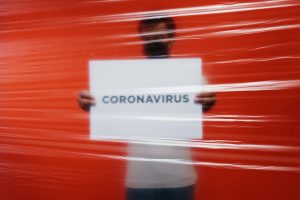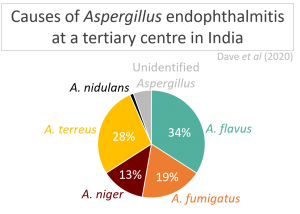Submitted by Aspergillus Administrator on 9 February 2009

Thousands of patients every year undergo treatment that severely reduces their ability to fight off infection. Referred to as ‘immune-compromised’ these people may have had major components of their immune system temporarily removed (e.g. people who are suffering from cancer of one of the components of their immune system – some types of leukemia are caused by this) with the intention of replacing it. These patients are very vulnerable initially and gradually become less vulnerable as their immune systems recover over a period of time – usually a few days/weeks.
At this time these people are kept in an extremely clean environment which is supplied with highly filtered clean air, are often fed with sterilised food and washed in sterile water, all with the intention of preventing contact with fungi or bacteria.
Unfortunately with fungi things are not so simple. The tiny fungal spores are so evasive of attempts to control it a few can get through and every ward has its fungal infections to treat in a small number of patients. This court case attempts to lay the blame at the door of hospitals, presumably in an attempt to get the hospitals to review their protocols for minimising fungal infections, particularly when there are building works in the direct vicinity of the hospital – as was also the case in this instance and in many others.
How to stop these infections? Firstly of course ensure all standard preventative measures common to all hospitals are in place so that risks are reduced. If infections still persist what other ways can fungi get into the patient?
- The patient’s skin & hair and their clothes will be covered in fungal spores from the outside air – do we need to ‘sterilise’ all patients prior to admittance and remove their clothes & possessions?
- Water for washing drawn from a showerhead or tap will be non-sterile – do we stop patients cleaning themselves?
- All staff and the patients’ family members entering the ward will also be covered in fungal spores so do we isolate the patient from their caring staff & family?
The patient would need to be kept in a hugely expensive sterile ‘bubble’ to prevent all sources of infection coming from the outside, but surely once we have done all that we have eliminated all risk?
Not quite: It is possible that fungi may exist for some time growing in a patients lungs prior to being killed by the patients immune system. A patient may thus have active aspergillus spores growing within them when they are admitted to a ward! How do we counter that?
There is an extensive review on this subject on the Aspergillus Website here and many more articles available to search in the Aspergillus Website search engine and in the Aspergillus World search engine.
Hospital acquired infection is referred to as ‘nosocomial infection’. Try searching for ‘aspergillosis nosocomial‘.
News archives
-
Title
Date


